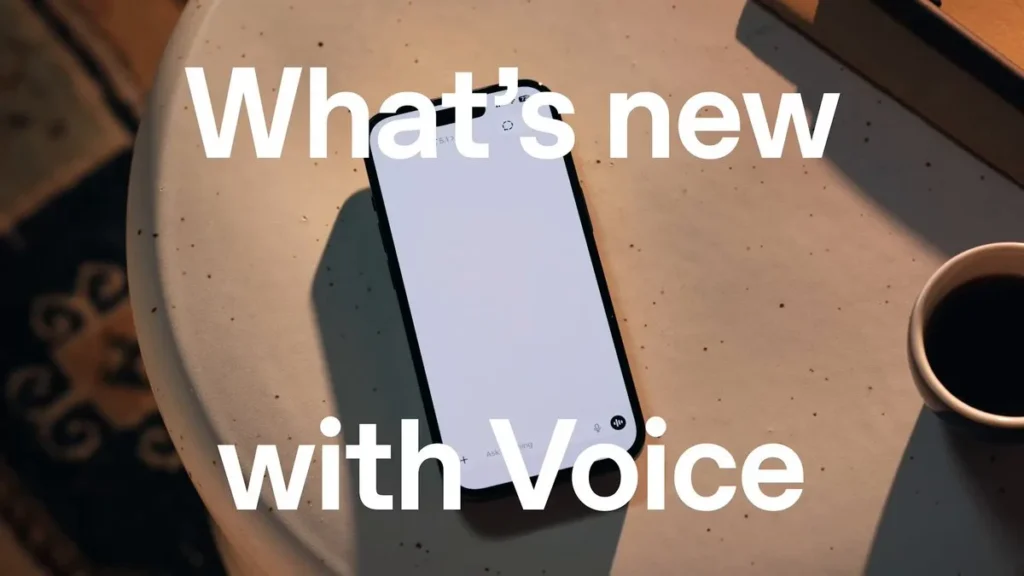ChatGPT: The Voice Mode Arrives Directly in the Chat Window
OpenAI has made a subtle yet significant change to the ChatGPT interface: the voice mode is now accessible directly from the chat window, eliminating the need to navigate through the previously available immersive “orb-filled” screen.
This improvement appears almost obvious in hindsight, as it greatly enhances the user experience.
And we can say without hesitation: this should have been the case from day one.
The Voice Mode: Long Powerful, but Too Hidden
Since the introduction of voice features in the mobile and web apps, ChatGPT offered two different experiences:
- The classic, text-based chat.
- An immersive voice mode, activated by tapping the wave icon, which opened a dark interface featuring floating colored orbs.
In March of last year, a significant development was added: real-time voice conversation, complete with natural interruptions, human-like pacing, and instant responsiveness.
Technically impressive. Ergonomically questionable.
This mode was limited to a separate interface, forcing users to switch between two different experiences depending on whether they were talking or typing.
What Changes: Voice Arrives Directly in the Chat
Now, tapping the wave icon simply activates the voice mode within the same conversation, without transitions, separate interfaces, or disruptions in the flow.
You can now use ChatGPT Voice right inside chat—no separate mode needed.
You can talk, watch answers appear, review earlier messages, and see visuals like images or maps in real time.
Rolling out to all users on mobile and web. Just update your app. pic.twitter.com/emXjNpn45w
— OpenAI (@OpenAI) November 25, 2025
In short, there’s no longer a need to transition to a special interface, no more navigating through the “orbs” screen, and conversations can fluidly alternate between text and voice. It’s fast. It’s natural. And it’s precisely what users have been expecting since the launch.
A More Human… and Simpler Conversation
The result is a unified experience. You can talk to ChatGPT like an voice assistant, then type a message without closing anything, and finally return to voice mode with a simple gesture — all within the same thread.
OpenAI already had the best voice technology on the market with its real-time conversation system. It just needed improved ergonomics. That’s now been addressed.
Why This Matters?
This change is not just a detail. It reduces friction, a key factor in adopting a new usage, bringing ChatGPT closer to the behavior of a personal assistant, like Siri, Alexa, or Gemini, but with significantly superior capabilities. It also paves the way for the “AI assistant mode,” positioning ChatGPT as a ubiquitous companion.
Each new version brings OpenAI closer to a universal, contextual, and multimodal voice assistant.
This interface improvement marks a decisive milestone.
A Small Update, A Big Leap for User Experience
The voice mode of ChatGPT has never been easier to use. It’s smoother, more natural, and much more logical. Less of a gimmick, more of a necessity.
A discreet update, yet a major evolution that transforms ChatGPT from a powerful tool… into a truly cohesive conversational companion.




